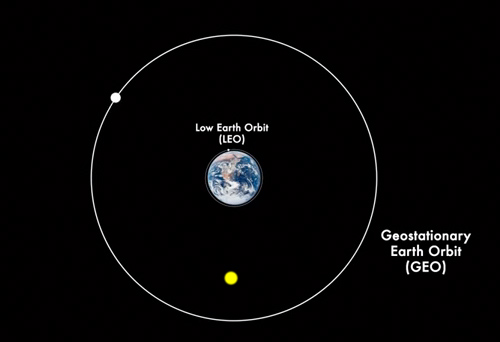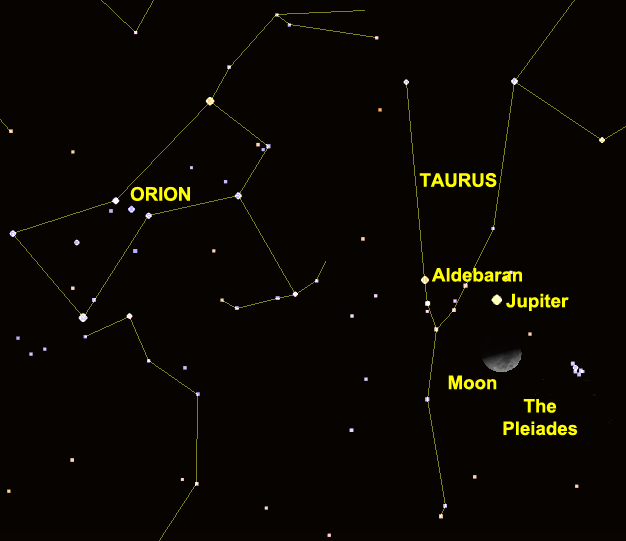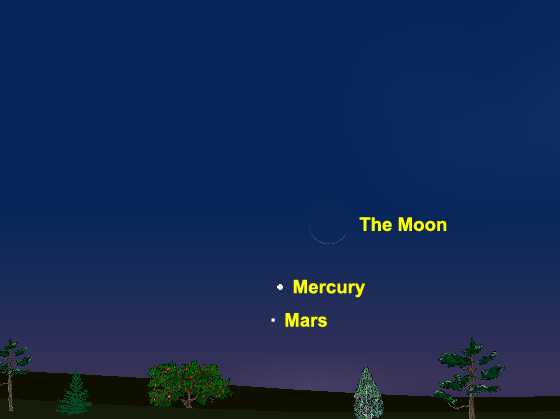There’s quite a lot happening in skies this month: A large asteroid will zip by the Earth, you can easily see the mighty planets Jupiter and Saturn, Mercury and Mars can be found next to each other right after sunset, the constellation Orion and its famous nebula are in a prime position for evening viewing … plus, there’s a comet on the way!
Record Setting Asteroid to fly by Earth
A large asteroid will fly really close by Earth February 15, near the low Earth orbits (LEO) in which our Name A Star Live satellites typically fly. The asteroid — called “2012 DA14” — is about the size of a gymnasium. It will fly approximately 18,000 miles (28,500 kilometers) from Earth’s surface. That’s really close: By comparison, geostationary satellites used to transmit television signals to people’s homes orbit the Earth at about 22,000 miles (38,000 kilometers). However, scientists assure us that there is no chance of the asteroid hitting Earth.

The asteroid will fly through the Name A Star Live constellations Virgo, Leo, Ursa Major and Ursa Minor.
Because the asteroid will be traveling so fast and so near the Earth, it will be very difficult to view. You would need a telescope in order to see it, but due to the asteroid’s speed it will be difficult to track the asteroid with the typical amateur telescope. In other words, even if you could find the asteroid in your telescope, the odds are it would move very quickly out of your field of view. But assuming you had a telescope with above average tracking ability, then those of you living from Eastern Europe, east, to Australia would have the only significant chance of seeing the asteroid as it will fly past you during your nighttime hours. Those of us in other parts of the world (such as North America, South America and Western Europe) are out of luck as the asteroid will fly by us during daytime hours.
See NASA’s really neat video about this record setting asteroid flyby!
But We’ll Probably Get to See a Comet Next Month!
In March, astronomers believe we may very well get to see “Comet PanSTARRS”. Unlike this month’s asteroid, Comet PanSTARRS could be viewable with the naked eye (i.e., no telescope or binoculars required). Warning: It’s difficult to predict how bright a comet will become. But this one stands a good chance of being a standout! We’ll have more to say about this comet in next month’s blog.
Seeing the Planets
Jupiter is in the constellation Taurus throughout February: It’s easy to spot near the V-shaped group of stars in Taurus, marked by the bright, red star Aldebaran. Aldebaran comes from the Arabic, meaning “the follower” as Aldebaran appears to follow the Pleiades star cluster throughout the course of the night.

February is also a good month this year to see the elusive planet Mercury. Mercury never rises very high in the night sky, but you can see it this month shortly after sunset. Be sure to look for Mercury during the first half, or so, of the month as Mercury retreats back into the sun’s glare by the end of the month.

Finding your star in the night sky
Stars are located within constellations, which are just areas of the night sky. Scorpius, Aries and Taurus are examples of constellations. Your Name A Star Live Star Certificate displays the name of your constellation. You can use our online World Constellation Guide to determine if you can see your constellation during the evening hours (between sunset and midnight). Of course, you’ll need a telescope to see your star. But you can see your constellation without the use of a telescope. You can also find your constellation by using our Virtual Planetarium™ astronomy software. A planisphere is another useful device.